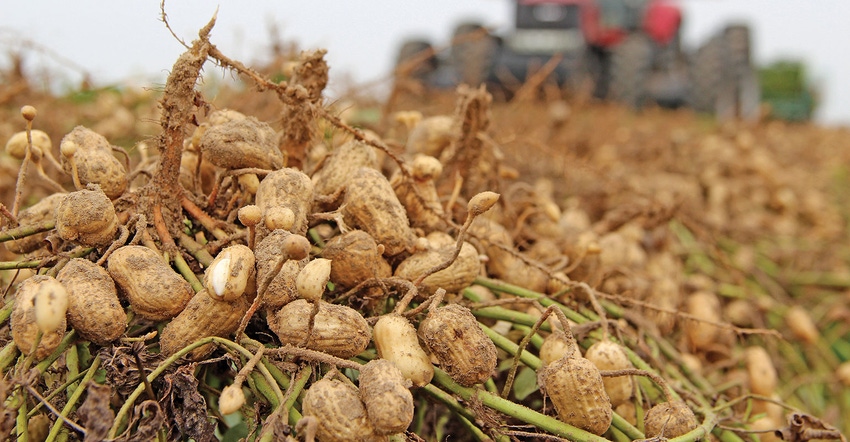
Mississippi peanut harvest
The weather has thrown yet another curveball to farmers this year as dropping temperatures threaten the Mississippi peanut harvest.
Malcolm Broome, executive director of Mississippi Peanut Growers Association, said Mississippi has about 20 to 30 percent of their peanut harvest still in the field.
"We were doing good with excellent yields," Broome said. "The rain was our best friend during the growing season. Further east had a number of dryland fields that just got too dry, but Mississippi has been getting some excellent yields. However, due to the weather, we now have peanuts that are probably 165 days old that should have been dug up at least at 140 to 145 days.
"If we can just get this last 20 to 30 percent out without much damage, we would come out, I think, with a pretty good crop overall. We just need about a week of good weather, and we could probably pull it off."
With some peanuts still in the field and cold temperatures looming, freeze damage is a concern.
"Now, we're worried about if it goes to 25 to 26 degree temperatures," Broome said on Nov. 8. "We could get freeze damage to the peanuts, and this could make them where they are worth about $150 a ton instead of $400."
Peanuts are not the only concern. Some cotton growers are still working on getting their crops out of the field.
"Some of us still have cotton in the fields, but if it doesn't get too wet for the machines to be able to go through the fields, we have a better potential to get it out easier than we will with the peanuts," Broome said.
"Everybody is trying to get the crop in across the peanut growing region, and if we can get this last bit in, that's going to help. Yields are probably not going to be quite as good as they've been in previous years due to weather conditions."
Arkansas peanut harvest
Andy Vangilder, Extension peanut agronomist for the University of Arkansas System Division of Agriculture, Travis Faske, Extension plant pathologist, Craighead County, Extension agent, and Chris Grimes worked a field of research peanut plots — 48 in all — until past sundown on Nov. 5.
"We finished after dark, and loaded the peanuts into a truck afterward," Vangilder said the next day. "And I’m glad we did. We wouldn’t have been able to come back to it today."
Overnight rainfall or a wet day can impair the harvest of any row crop — but the same conditions can bring a peanut harvest to a dead stop, especially when freezing conditions are moving in.
Across Arkansas, more than 91 percent of an estimated 32,000 acres of peanuts had been dug from the ground by Nov. 5 — the first step in the legume’s unusual harvest process. But of that 91 percent, only 55 percent had been harvested off the ground, according to a U.S. Department of Agriculture report issued Nov. 4. Vangilder said growers had perhaps reached the two-thirds harvested mark as of Nov. 5.
The same wet spring that led to widespread delayed and prevented planting in most Arkansas row crops set peanuts back as well. And while both the digging and harvesting stages are ahead of numbers for this time last year, weekend rainfall and freezing temperatures early in November may make the final stretch especially difficult for peanut growers in the state.
"You can’t dig peanuts when they’re still high-moisture, and then have a freeze within a day or two," Vangilder said. "That damages the peanut, sometimes beyond use. Right now, we’re recommending that growers with peanuts left in the field just leave them there until after the freeze."
Growers will also likely have to contend with a scarcity of harvesting resources. While producers are enjoying the availability of a new buying point in Lee County, peanut acreage is also about 23 percent greater than in 2018.
"With peanuts, you can get a real backlog," Vangilder said. "They’re higher moisture right now. Growers load them on peanut trucks with specialized beds that allow the peanuts to dry down. When they get down to a certain moisture level, the peanuts can be stored in a warehouse. With higher moisture, the whole process just takes longer.
"That whole process is going to get better in Arkansas because there’s another buying point coming online in Jonesboro," he said. "But there’s just going to be some growing pains."
About the Author(s)
You May Also Like






